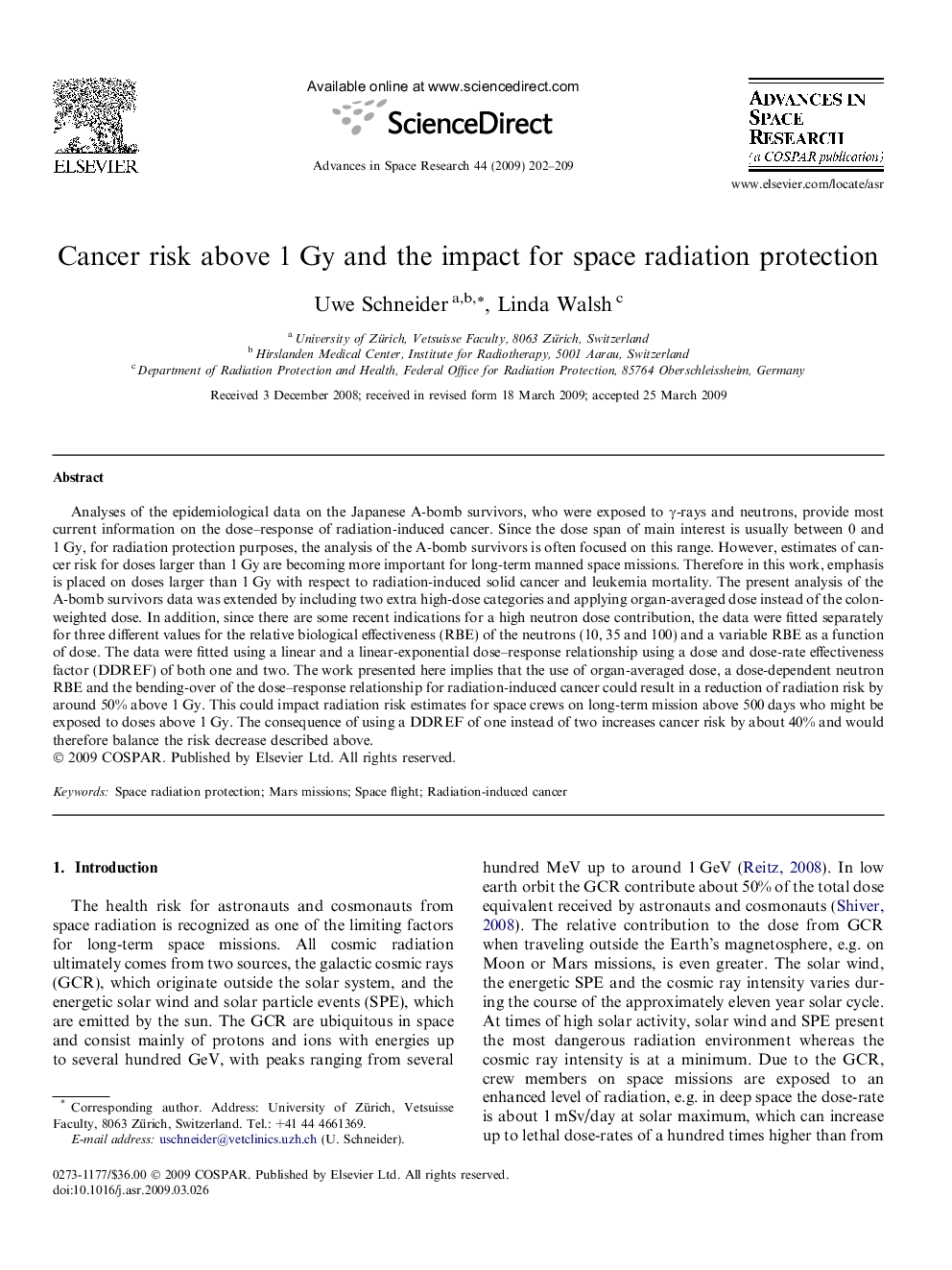| کد مقاله | کد نشریه | سال انتشار | مقاله انگلیسی | نسخه تمام متن |
|---|---|---|---|---|
| 1767169 | 1020179 | 2009 | 8 صفحه PDF | دانلود رایگان |

Analyses of the epidemiological data on the Japanese A-bomb survivors, who were exposed to γ-rays and neutrons, provide most current information on the dose–response of radiation-induced cancer. Since the dose span of main interest is usually between 0 and 1 Gy, for radiation protection purposes, the analysis of the A-bomb survivors is often focused on this range. However, estimates of cancer risk for doses larger than 1 Gy are becoming more important for long-term manned space missions. Therefore in this work, emphasis is placed on doses larger than 1 Gy with respect to radiation-induced solid cancer and leukemia mortality. The present analysis of the A-bomb survivors data was extended by including two extra high-dose categories and applying organ-averaged dose instead of the colon-weighted dose. In addition, since there are some recent indications for a high neutron dose contribution, the data were fitted separately for three different values for the relative biological effectiveness (RBE) of the neutrons (10, 35 and 100) and a variable RBE as a function of dose. The data were fitted using a linear and a linear-exponential dose–response relationship using a dose and dose-rate effectiveness factor (DDREF) of both one and two. The work presented here implies that the use of organ-averaged dose, a dose-dependent neutron RBE and the bending-over of the dose–response relationship for radiation-induced cancer could result in a reduction of radiation risk by around 50% above 1 Gy. This could impact radiation risk estimates for space crews on long-term mission above 500 days who might be exposed to doses above 1 Gy. The consequence of using a DDREF of one instead of two increases cancer risk by about 40% and would therefore balance the risk decrease described above.
Journal: Advances in Space Research - Volume 44, Issue 2, 15 July 2009, Pages 202–209